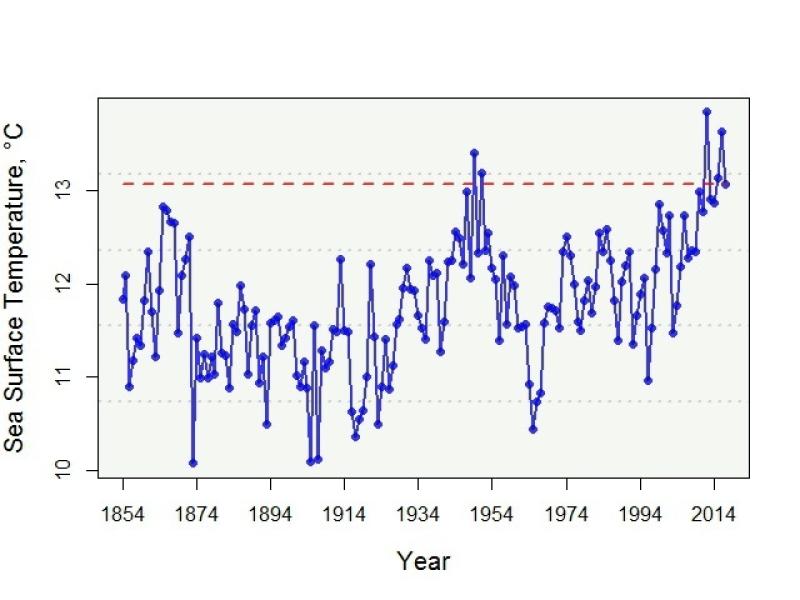Temperatures at the bottom of the water column throughout the Northeast Shelf marine ecosystem are rising, especially in the fall. At the same time, many species are expanding their habitats northeastward along the East Coast or into deeper water, according to the latest current conditions report from the Northeast Fisheries Science Center.
“As species distributions have shifted, many species are occupying more of their new habitats, which suggests greater overlap with the habitats of other species,” said Kevin Friedland, an oceanographer with the Northeast Fisheries Science Center’s Ecosystems Dynamics & Assessment Branch and author of the report. “In addition, the fall distribution for 48 species indicates that on average species have moved further to the northeast along the shelf and into deeper waters.”
Surface, Bottom Water Temperatures Rising
Both surface and bottom water temperatures have been warming in the Gulf of Maine, although surface waters have moderated from the record highs of 2012 and the warm conditions recorded in 2016. Surface and bottom water temperatures collected over time indicate that a significant, sudden and persistent change, called a regime shift, may have occurred in Gulf of Maine water temperatures, with the last eight years the warmest in the time series by a wide margin.
Temperatures increased about 1.5 degrees Celsius (2.7 degrees Fahrenheit) overall, with the northern end of the ecosystem in the Gulf of Maine and on the Scotian Shelf showing temperatures well above average from summer into fall.
Low Chlorophyll, Smaller Blooms
While ocean temperatures have increased in recent years, chlorophyll concentration, an indicator of phytoplankton stock at the base of the food chain, has been declining. Chlorophyll concentration in the Northeast Shelf Ecosystem increased starting in the 1990s, peaked in 2011, and has been declining since then to the lowest level in the time series in 2017.
Phytoplankton production represents the base of the food chain and provides the source of food for fishery resources. Low annual chlorophyll concentration is also reflected in the seasonal phytoplankton blooms, which are now detected throughout the year instead of only during spring and fall. In 2017, spring blooms were among the smallest ever detected in all areas of the shelf. Fall blooms were short, with average or below average intensity.
“It is well known that the Northeast Shelf is experiencing increased temperature conditions, and it is now evident that parts of the ecosystem have experienced abrupt changes in temperature in recent years,” said Friedland. “Gradual and abrupt changes in environmental conditions can have different impacts on species and ecosystems.”



